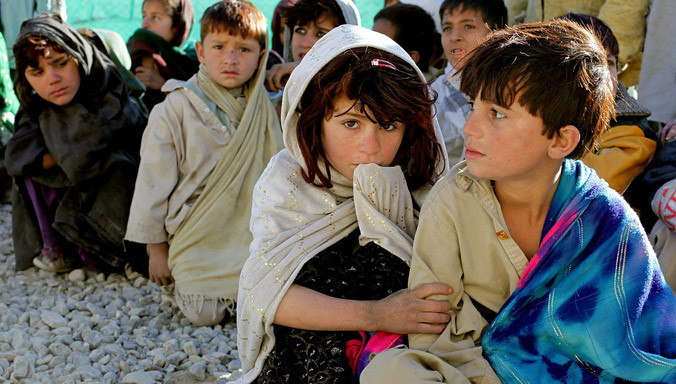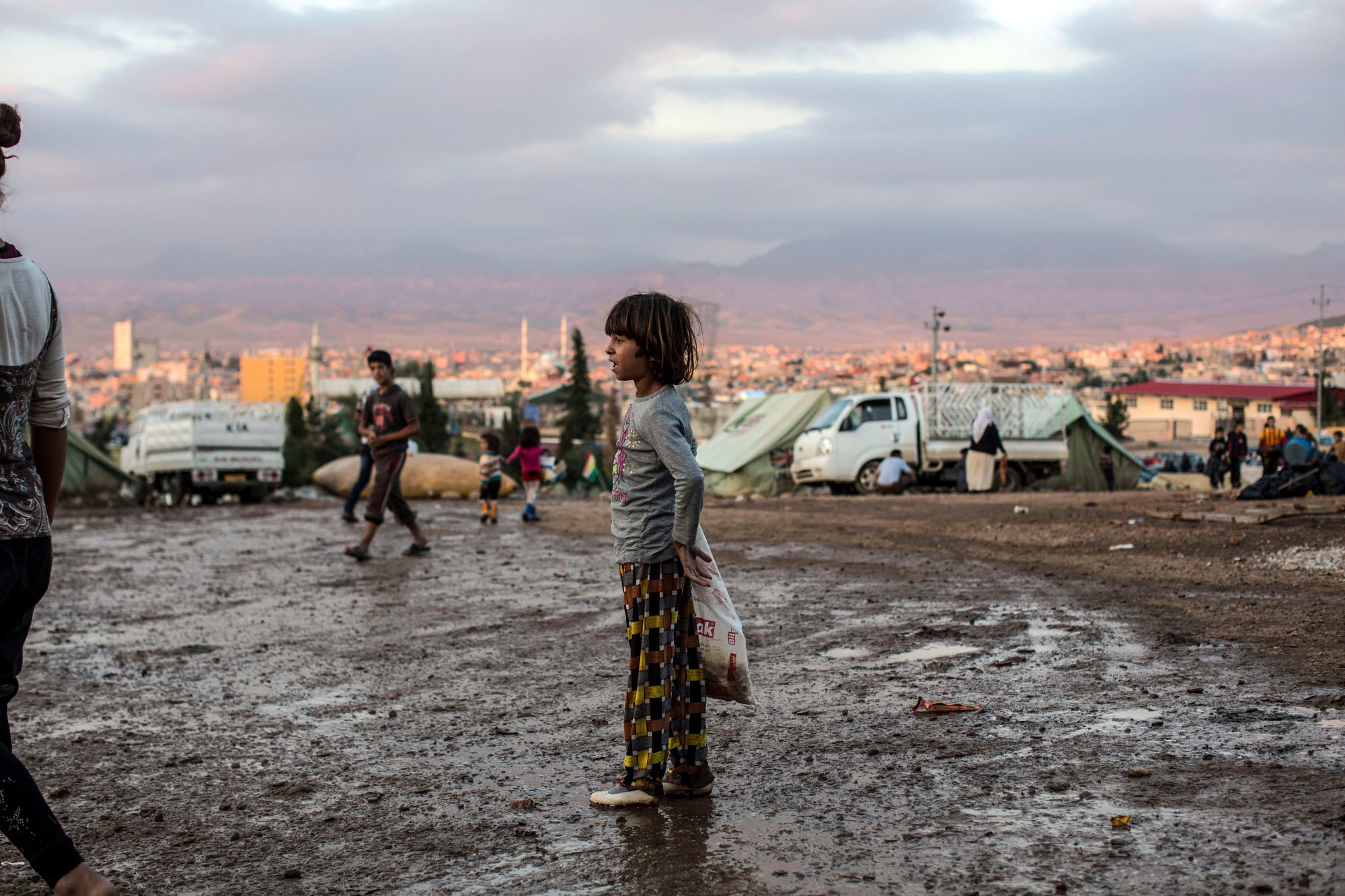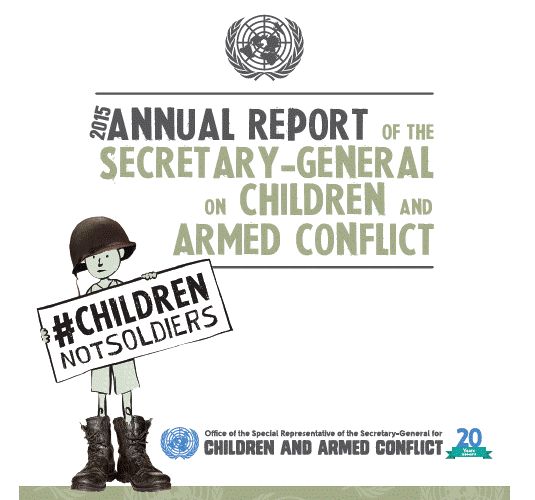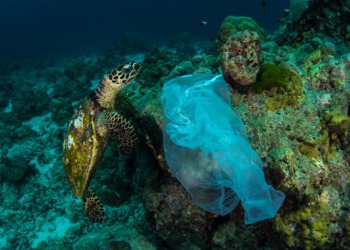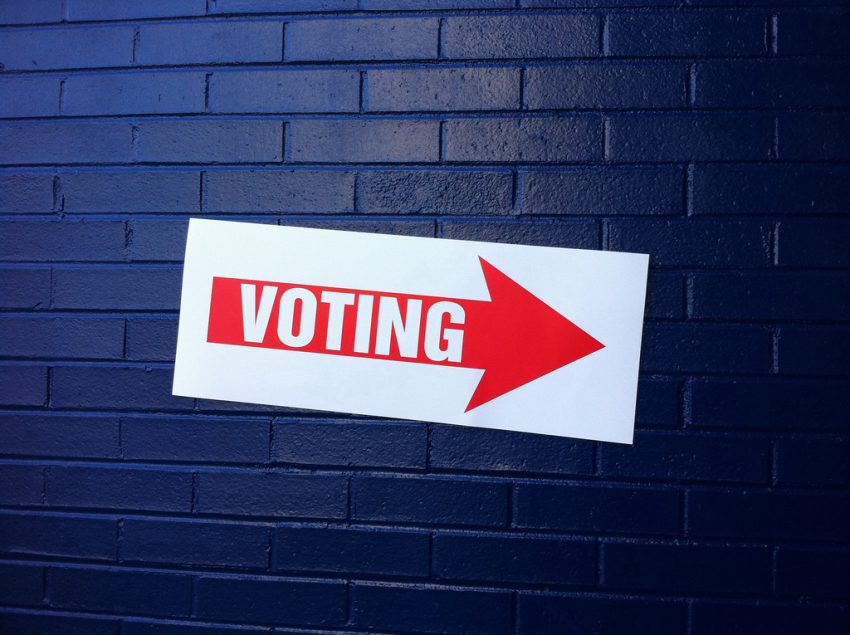Armed conflicts around the world are disrupting the lives of millions of citizens and have caused the largest movement of people since World War II.
During conflicts and post-conflict situations, children are the most affected by violence. Many of them lose their families and others are separated from their relatives in their displacement. Their risk of suffering grave human rights violations is incredibly high.
No matter who they are and where they come from, the violations and abuses against these children must stop.
Boys and girls experiencing armed conflicts often remain as invisible victims of violence. Because of that, the support of the international community is urgently required to protect children against human rights abuses that stem from conflicts.
The United Nations Millennium Development Agenda dedicates several goals related to children that include the need to ensure quality education and health services and to stop the recruitment of child soldiers and all forms of violence against minors.
Photo Credit: UN PHOTO/OCHA/Iason Athanasiadis
The Sustainable Development Goals state that every child has the right to a quality education, but due to the violence in conflicts and post-conflict conditions, schools are destroyed, and displaced children often can’t continue their education.
Prolonged conflicts put at risk the education of entire generations. Without education, children won’t have basic skills to participate in the future in the development of their countries.
Present armed conflicts leave schools and hospitals more and more in the direct line of fire and attacks against those basic infrastructures were prevalent in 2015. The violence against healthcare centers and schools has a significant effect on the protection of children affected by armed conflicts, causing terrible increases in the mortality rate of minors. So children´s right to health is also put at risk.
Another point of concern is the situation of girls caught in conflict zones, who are more likely to become child brides. In this sense, among the list of 30 states with the highest prevalence of child marriage, more than a half are considered fragile or conflict-affected countries.
In the Video: Boko Haram Conflict Keeping Kids Out of School Video Credit: Human Righst Watch.
The Special Representative of the Secretary-General for Children and Armed Conflict, Leila Zerrougui, works as the principal United Nations advocate for the protection of children affected by those situations and fosters international cooperation to that end. Zerrougui´s mandate is focused on raising awareness about the threats that children face in armed conflicts, promoting the monitoring of abuses, and reporting them to the General Assembly and the Human Rights Council. Mrs. Zerrougui has specifically worked on international campaigns to prevent the recruitment and use of children in armed conflicts. Mrs. Zerrougui has specifically worked on international campaigns to prevent the recruitment and use of children in armed conflicts.
Related article: “ENDING CHILD MARRIAGE: AN URGENT GLOBAL CHALLENGE”
Six grave violations work as the basis to collect information to report on violations affecting children in armed conflicts:
- Killing and maiming of children;
- Recruitment or use of children as soldiers;
- Sexual violence against children;
- Abduction of children;
- Attacks against schools or hospitals;
- Denial of humanitarian access for children.
According to the 2015 Annual Report of the Secretary-General on Children and Armed Conflict. As highly concerning examples, it´s important to point out that attacks on schools and hospitals were prevalent in 2015 and documented in 19 out of 20 situations of conflict and that an ever-growing number of children are being displaced by armed conflict, many of whom are unaccompanied or separated from their families during displacement. These children are at a high risk of grave violations in and around camps, and other areas of refuge.
Children are significantly affected by violent extremism. In that sense, boys and girls are usually direct targets of extremist groups. In this sense, the Islamic State of Iraq and the Levante (ISIL) uses minors for its terrorists commitments, recruiting boys as child soldiers, featuring them in social media and in some cases as executioners and abusers of girls.
Photo Credit: UN.ORG
In Syria, thousands of children have been killed during over six years of war. Afghanistan recorded the highest number of child deaths and injuries since the United Nations started the systematic documenting of civilian casualties in 2009. In South Sudan, children suffered horrible violations, especially during the bloodthirsty military offensives against opposition forces. In Somalia, there was a 50% increase in the number of recorded violations against children. 2015 was also terrible for children affected by armed conf licts in Yemen, where there was a five-fold increase of the number of children recruited and six times more boys and girls were killed and/or maimed. In Nigeria, Boko Haram increased suicide attacks using girls as suicide bombers in crowded public spaces.
Furthermore, the proliferation of actors involved in armed conflicts is another key of concern for children´s protection. International coalitions, states or armed groups conducting cross-border aerial operations, especially in populated areas, resulted in highly vulnerable environments for the children´s security.
According to UNICEF, around the world, nearly 50 million (and this is a conservative estimate) children have migrated acrross borders or have been forcefully displaced. More than half of these minors fled from violence and insecurity (28 million in total).
Migration and displaced children are at risk of the worst forms of abuses and violence. From human smuggling to other kinds of organized crime, boys and girls can be victims of dramatic forms of human rights violations.
Notwithstanding if they are migrants, refugees or internally displaced, children are entitled to protection and have the right to be supported by the Convention on the Rights of the Child.
UNICEF states several key findings about refugee and migrant children in “Uprooted: The growing crisis for refugee and migrant children”:
- Nearly 1 in 200 children in the world is a child refugee.
- Nearly 1 in 3 children living outside their country of birth is a refugee.
- Around the world, 28 million children have been forcibly displaced.
- Between 2005 and 2015, the number of child refugees under UNHCR´s (United Nations Refugee Agency) mandate more than doubled.
- 7 in 10 children seeking asylum in Europe in 2016 were fleeing conflict in Syria, Afghanistan or Iraq.
Human rights violations against children must be held accountable by international organizations and states to ensuring justice and protection to minors affected by armed conflicts and post-conflict situations. All crimes must be investigated promptly and effectively and prosecutions must be pursued.
International organizations, NGOs, and states are doing a great job advocating and working to protect children against armed conflicts and post-conflict violence. But it won´t be enough until there is no child left behind.
International campaigns such as “Children, Not Soldiers” (#ChildrenNotSoldiers), an initiative of the Special Representative of the United Nations Secretary-General for Children and Armed Conflict and UNICEF, aimed to consolidate a global position that children can´t belong to government forces in conflicts and to prevent this unfair practice.
In the Video: Forest Whitaker, UNESCO Special Envoy for Peace and Reconciliation, speaks about the campaign “Children, Not Soldiers”. Video Credit: Office of the Special Representative of the United Nations Secretary-General for Children and Armed Conflict. Youtube/ChildrenInWar
At its launch in March 2014, the campaign was focused on the eight countries whose national security forces were listed for the recruitment of children for armed conflict: Afghanistan, Chad, the Democratic Republic of the Congo, Myanmar, Somalia, South Sudan, Sudan and Yemen. All of them signed Action Plans to end and prevent the recruitment of children.
Those Action Plans are written and signed commitments outlining concrete and time-bound measures to end and prevent grave violations against children.
Some of the actions calling on the authorities are: to criminalize the recruitment and use of children; to issue military command orders prohibiting the recruitment and use of children; to ensure accountability for violations of children´s rights; to integrate age-verification mechanism in recruitment procedures; to release all children identified in the ranks of security forces and ensure children´s reintegration into civilian life.
The “Children, Not Soldiers” campaign states that effective resources are required to support the release and reintegration of former child soldiers, with special attention to the needs of girls. Financial support to reintegration programmes must be a key point for the development programmes in post-conflict situations.
In conclusion, the nature of present armed conflicts whose aim is to kill the highest number possible of civilians, including children, and the disappearance of communities and social structures that protect minors in armed conflicts and post-conflict contexts, have increased their vulnerability and their human rights violations. Boys and girls affected by those situations will put up with suffering and poverty all their lives.
Boys and girls are the key to building the peaceful world that the humanity needs and, without healthy and protected children, that global progress won´t be possible.
In the Video: Shining a smile on hope, Hiba shares her story of hope after fleeing Syria | UNICEF at 70. Video Credit: UNICEF
Recommended reading: “THE AUTHENTIC POWER OF MICHELLE OBAMA”


